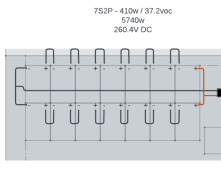Since your panels were wired 3s2p, so long as not feeding current into something else, OK to unplug in the sun.
I though for a moment you had wired 6s and then shorted output + to output -, in which case current flowing and you wouldn't want to unplug with sun on them.
If pulling power from PV to let inverter run a load, or simply to charge battery, current would be flowing. You should always interrupt current with switch or breaker before unplugging MC connector or removing a fuse. I check voltage at terminals before/after opening switch, to confirm I've interrupted current on the correct string (I have several GT PV inverters and open AC breaker to interrupt DC current flow.)
An open circuit series string of panels in the sun, OK to unplug. Only a current and arcing problem if current flowing.
Non-electrical rubber gloves might provide protection, or they might not.
We were given cut-resistant gloves at work for mechanical assembly. Fibers include steel 15% !
For electrical, we are given rubber gloves, tested and rated for electricity. Lowest category good for 500Vrms.
Electrical gloves are to be used with leather protectors on the outside. (no jewelry inside which could damage them.) If used without leather outer gloves, only considered good for one day's use, then must be retested.
I discovered rubber hose isn't always an electrical insulator.
A while back I bragged about creative use of heater hose as tough, large size insulation for electrical terminals: https://diysolarforum.com/threads/fire-never-cover-lifepo4-with-wood.19373/page-12#post-238207 It seemed like a good idea at the time. More recently, I was wiring up...

diysolarforum.com





